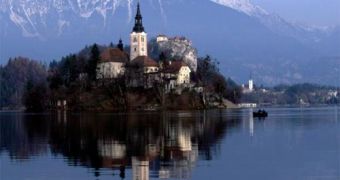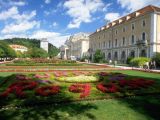Due to its semi-Central European location, Slovenia is easily accessible via a variety of transport means, most notably by air or by car. The capital city of Ljubljana is linked to most European capitals (among which Frankfurt, Vienna, Brussels, Paris, London, Dublin, Amsterdam, Copenhagen, Moscow, Tel Aviv, Istanbul, Prague and many others), and those of you arriving from outside Europe will have a layover in one of the main European airports, depending on your traveling itinerary. If you decide you're interested in exploring this beautiful country by yourselves and decide to drive, you can either fly in and rent a car locally, or drive your own car, in which case you will enter Slovenia via one of its border crossings with either Italy, Austria, Hungary or Croatia. The country's motorways are in good condition and there are plenty of roadside gas stations, motels and restaurants to cater for your needs.
Slovenia's climate reflects the variety of the country's landscape. The Adriatic coastal area has of course a Mediterranean climate, with mostly dry summers when average high temperatures usually stay below 30?C (86?F). The coast-side winters however can be quite a challenge: despite mostly mild conditions, the cold northeastern bora winds and heavy rainfall can put off those of you who decided to stop by between December and March. Moving on towards the inland areas, we come across the typical central European climate, with cold winters, during which temperature plummets to barely above zero (32?F). During late spring, summer and early fall (April to mid-October), daytime temperatures mostly sit in the high 20?Cs (low 80?Fs), however, significant downpours can come at just about any time during this interval, becoming colder at the end of October, extending into the late fall and early winter.
September is probably the best month to visit Slovenia if you're interested in hiking and climbing, as the summer crowds have all but left and there's a lot of good wine and traditional food to be enjoyed in the country's lowlands and sub-alpine wine growing hills, along with a great deal of varied cultural sites to discover and explore, whether we're talking about Roman remains, medieval castles or fascinating old monasteries If you're into skying or want to enjoy the country's famed river canyons, waterfalls and glacier lakes, then December to March is definitely your high-time, while July and August are the best months to be on the Slovene coastlines - however, you should be aware that most hotels raise their rates significantly during this interval. The city's capital city of Ljubljana can be enjoyed throughout most of the year, bearing in mind the climate specifications.

 14 DAY TRIAL //
14 DAY TRIAL // 
